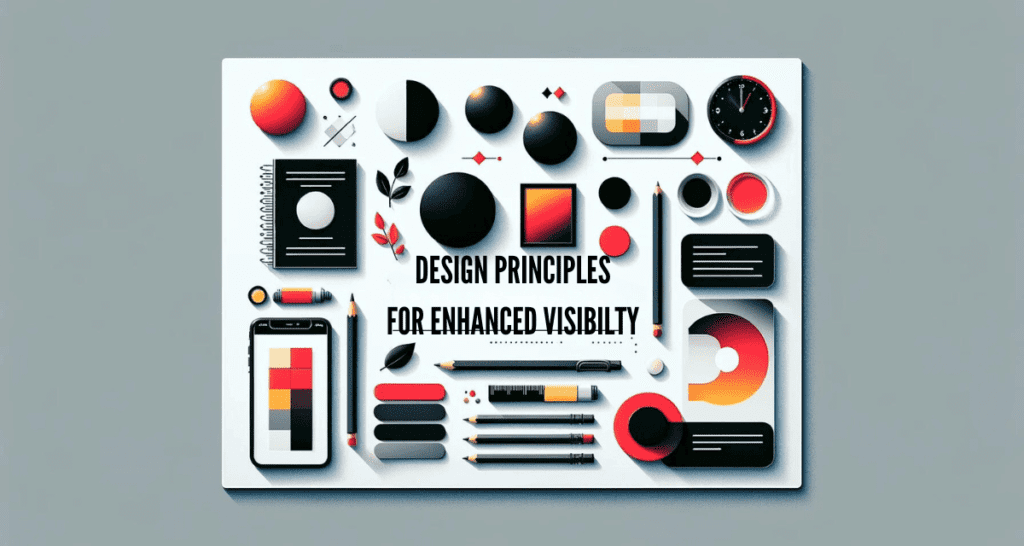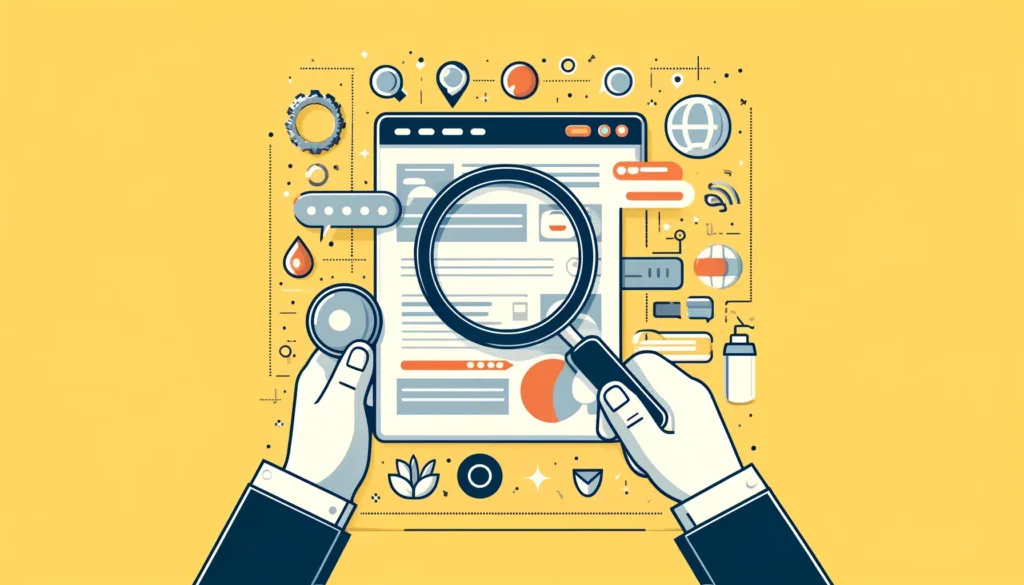Introduction
In today’s digital landscape, the visibility of your content directly influences the success of your online presence. Effective web design plays a pivotal role in ensuring your content not only reaches the intended audience but also engages and retains them. This article explores crucial web design strategies that enhance content visibility, catering to both beginners and professionals aiming to improve their digital footprint.
The Crucial Role of Content Visibility
Content visibility is fundamental in digital marketing, determining how effectively your information engages users. A strategic approach to web design can significantly enhance how your content is observed and interacted with, ultimately driving better engagement and conversion rates.
Design Principles for Enhanced Visibility

1.1 Layout and Structure
A well-organized layout is key to making your content easily accessible. It should guide the visitor naturally through the website, making information easy to find and engaging from the first glance. Consider using a grid layout, which organizes content into sections that are easy to scan and digest, ensuring that visitors can quickly grasp the most important information.
1.2 Typography and Readability
Choosing the right fonts and text sizes is important for readability. Simple, clear fonts work best for reading online. Ensure there’s sufficient contrast between the text and the background. Remember, the goal is to make the reading experience as effortless as possible, so larger font sizes and well-spaced lines can help achieve a high level of readability.
Using Colors and Images Strategically
2.1 Color Psychology
Colors play a significant role in how users perceive your content. Choosing the right color scheme can dramatically enhance content visibility and user engagement. For example, using contrasting colors can make your most important content stand out. Remember, each color can evoke different emotions and actions from users, so select colors that align with the message you want to communicate.
2.2 Optimizing Images
Images are powerful tools for catching the user’s eye and breaking up text to improve readability. However, it’s crucial to use high-quality images that are relevant to the accompanying content. Additionally, optimizing image sizes and load times is essential to maintain fast page speeds, which directly influence user satisfaction and SEO rankings.
SEO Optimization in Web Design
3.1 Integrating SEO Best Practices
Embedding SEO strategies within web design is crucial for enhancing content visibility. Ensure your website’s code is clean and well-structured, which helps search engines crawl and index your content more effectively. Use header tags (H1, H2, H3) appropriately to emphasize important topics and keywords. Additionally, incorporate alt text for images and meta descriptions for pages to improve their discoverability.
3.2 Mobile Optimization
With the increasing prevalence of mobile browsing, responsive design is non-negotiable. Websites must perform seamlessly across all devices to ensure a good user experience and to maintain strong SEO rankings. Google’s mobile-first indexing means that Google predominantly uses the mobile version of the content for indexing and ranking, highlighting the importance of a mobile-friendly website design.
There’s another article written by our experts on The Ultimate Mobile SEO Checklist.
Advanced Techniques and Tools for Improving Content Visibility
4.1 Dynamic Content Display
Incorporating dynamic content, such as animations or interactive elements, can significantly enhance user engagement. These features help draw attention to key content and make the user experience more enjoyable and memorable. Implementing elements like hover effects, animated graphs, or interactive slideshows can make your content more lively and engaging.
4.2 Analytics and Testing
Using analytics tools is crucial for comprehending how users engage with your website. Tools like Google Analytics can provide valuable insights into which parts of your site attract the most attention and where users spend most of their time. Regular testing and analysis allow for continuous improvements, ensuring your design remains optimal for content visibility.
Conclusion:
Effective web design transcends mere aesthetics—it is a pivotal strategy for enhancing content visibility and driving user engagement. By implementing the design principles and advanced strategies discussed, businesses can ensure that their content not only reaches but also resonates with their target audience. From understanding the psychology of color to leveraging dynamic content and robust analytics, each element plays a crucial role in the digital marketing landscape. Embrace these strategies to transform your website into a powerful tool that captivates and converts, establishing a strong online presence that stands out in today’s competitive market.
Author
-

Olivia, our Design Professional , crafts digital landscapes that captivate and resonate. With an artistic flair and a penchant for user experience, he turns visions into visually stunning, user-friendly websites.
View all posts




